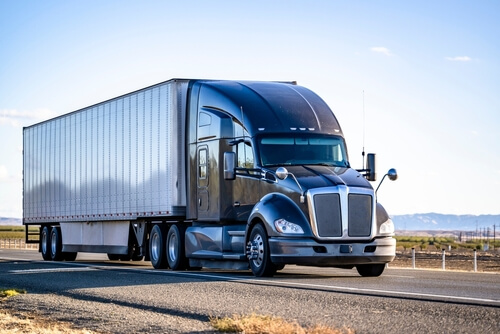Freight Carrier Challenges Continue to Shift

Get paid faster with Factoring.
Say goodbye to cash flow worries.
Originally posted on FreightWaves on June 6, 2024.
The freight industry is buzzing with talk about a coming market shift. While high-frequency data does suggest that the ongoing freight recession is beginning to ease, the climb back up is expected to be slow for carriers. In today’s environment, carriers continue to grapple with an oversaturated market and less-than-ideal economic conditions, making it difficult to maintain profitability.
Over the past couple of years, carriers have consistently reported concerns related to increased fraud, growing fuel costs, suppressed rates, and a surplus capacity. While these challenges continue to impact carriers, a recent Truckstop survey found that other issues were also top of mind.
A new landscape of challenges: Truckstop survey insights
In a recent survey by Truckstop, over 2,000 carriers were asked about their biggest challenges. Aside from fuel prices and capacity, the most commonly reported issues are discussed below.
Soaring insurance costs
Over 60% of surveyed carriers identified rising insurance costs as a significant challenge.
Insurance premiums have been on the rise for years due to a combination of factors, including economic inflation and the growing threat of nuclear verdicts. This trend shows no sign of slowing down. In fact, Morgan Stanley cut earning estimates for all its covered transportation companies earlier this year due to rising insurance costs.
“A survey performed by Morgan Stanley showed most operators expect insurance costs to increase between 10% and 30%, with premiums alone increasing by low-double-digit percentages,” FreightWaves Finance Editor Todd Maiden reported in February.
The continued rise in insurance costs has an outsized impact on small carriers and owner-operators. According to the American Transportation Research Institute, small carriers saw their premiums soar from 10.2 cents per mile in 2021 to 13.6 cents per mile in 2022. At the same time, large carriers actually experienced a slight decrease in premiums between 2021 and 2022.
Insurance premiums go hand-in-hand with both historical safety records and current safety measures. Larger carriers tend to reap the rewards of their long histories, while smaller carriers are often newer to the industry with out the proven safety record that would assure them lower rates. At the same time, larger carriers have more resources to invest in safety-promoting technologies, leading to lower premiums.
Growing insurance premiums eat into carrier profits. The prevalence and persistence of this issue likely helped push it to the top of carriers’ list of concerns.
Rising equipment costs
Carriers noted that the increased cost for trucks and equipment, coupled with interest rates, is making it difficult to acquire and maintain trucks.
Many companies are choosing to forgo equipment upgrades in order to save money, but this approach can backfire. Older trucks aren’t as fuel efficient, leading to consistently higher diesel spend. At the same time, older equipment naturally needs more maintenance in order to continue functioning correctly. At best, this results in higher maintenance costs. At worst, it leads to equipment neglect and eventual breakdowns, which can prove both costly and dangerous.
When carriers cannot upgrade and maintain their equipment, it ultimately impacts their ability to compete in the market and win freight. This creates a cycle of decreased profitability.
Government regulations and compliance requirements
Keeping up with ever-changing regulations can be a time-consuming and costly burden. Over 35% of carriers cited regulations as a top concern.
While regulations often vary by state, a significant percentage of carriers are facing environmental legislation that will require them to upgrade their fleets in the coming months and years. This is a challenge for carriers that are already stretched thin.
Regardless of existing regulations, the current regulatory environment has created additional stress for carriers. Companies must closely monitor pending legislation and government initiatives when making changes to their fleets in order to ensure they do not end up out of compliance in the near future.
The struggle to find safe parking
About 30% of carriers that Truckstop surveyed pointed to parking as a top challenge. The ongoing lack of secure parking options has been a topic of conversation across the industry for years, but the problem persists.
The Federal Highway Administration, American Trucking Associations, and the Owner-Operator Independent Drivers Association recently teamed up to conduct a survey on truck parking. The trio found that, on average, there is only one parking spot per 11 drivers on the road, leading drivers to spend a significant amount of time searching for a spot.
“Studies show that 98% of drivers report problems finding safe truck parking, and the average truck driver parks 56 minutes earlier than necessary in order to ensure that they are able to find a safe, authorized parking location,” according to the American Trucking Associations.
When drivers start looking for parking an hour before their clocks run out, this leads to lost income for individual truck drivers and lost revenue for carriers. When they do not allow for this extra time, it can easily lead to costly hours of service violations, creating a lose-lose situation.
Beyond the financial impacts, the nationwide shortage of truck parking also leads to safety concerns for drivers.
When no safe parking is accessible, drivers may be forced to park in abandoned parking lots or even on the side of the road. This leads to serious security concerns for drivers. The well-known 2009 murder of Jason Rivenburg – a driver forced to park in an abandoned lot – is still felt in the truck driving community, reminding others of the tragic possibilities.
Carriers adapt to challenges with bigger networks, more loads
These challenges have transformed how carriers do business. Carriers have expanded their networks by adding 13% more brokers compared to the previous year, according to the Truckstop survey. Data indicated that carriers are now handling approximately 12% additional loads per month, presumably to offset financial difficulties.
Overall, carriers have had a significant increase in challenges related to deadheading, insurance premiums, equipment costs, regulatory compliance, parking, and fraud over the past year.
Right now, choosing the right partners to navigate the current environment can make the difference between thriving and barely surviving for carriers.
Get helpful content delivered to your inbox.
Sign up today.
Find high-quality loads fast, get higher rates on every haul, and access tools that make your job easier at every turn.






